Tags
"conservation"
Siegel Salmon Restoration Internship 2015: Garrett Linck, Part 3
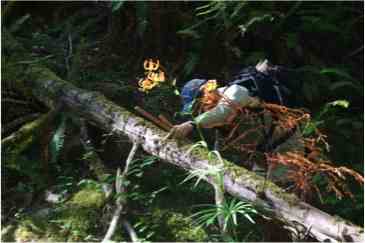
Doug navigates his way under a downed tree while collecting salmon habitat data. Using CHaMP (Columbia Habitat Monitoring Protocol), we measured the length, width at 1/3rd, width at 2/3rds, and maximum depth, while distinguishing each stretch of the stream as either a riffle, scour pool, or non-turb.
Garret Linck is working on habitat conservation and restoration in the California wilderness as the Paul Siegel Salmon Restoration intern. For his final blog installation, he is sharing a series of photos from his experience.
Fort Bragg annually hosts “The World’s Largest Salmon Barbecue” as an effort to raise funds and awareness for Salmon Habitat Restoration in the area. While CHaMP was developed in the Pacific Northwest, conservation organizations have been actively working to extend efforts to Northern California to collect data and restore ideal stream conditions, especially in the aftermath of recent droughts. More information here: http://www.salmonrestoration.com/world_largest_b_3.html.
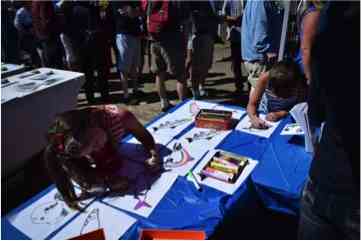
Continue reading Siegel Salmon Restoration Internship 2015: Garrett Linck, Part 3
Siegel Salmon Restoration Internship 2015: Garrett Linck, Part 2
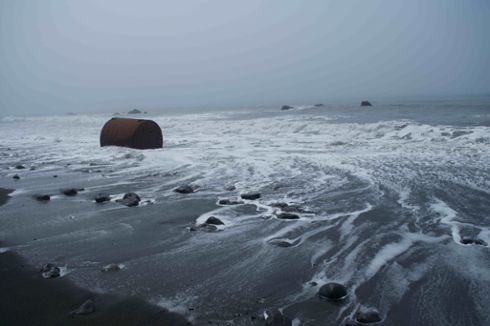
Garret Linck is working on habitat conservation and restoration in the California wilderness as the Paul Siegel Salmon Restoration intern.
It’s hard to believe that I only have two and a half weeks left working for the Mendocino Land Trust. I’m nearly finished with one of the largest projects I’ve been working on this summer: a management plan for the Noyo River Redwoods Property. In my last post I mentioned the salmonid habitat surveys I was conducting in the Noyo River with Doug. This property lies along that same river, but further inland in eastern Mendocino county—near the city of Willits. The 426-acre property was purchased for $7.5 million in 2011 by Save the Redwoods League (a non-profit organization that protects and restores coastal Redwood forests), before being sold to the Mendocino Land Trust in 2012.
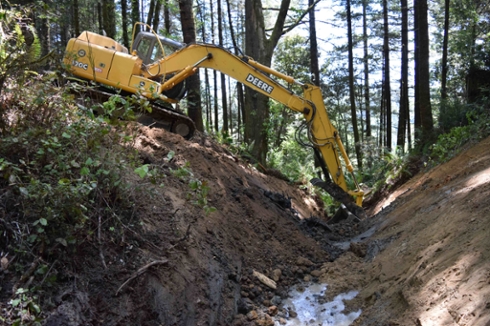
Continue reading Siegel Salmon Restoration Internship 2015: Garrett Linck, Part 2
Siegel Salmon Restoration Internship 2015: Garrett Linck
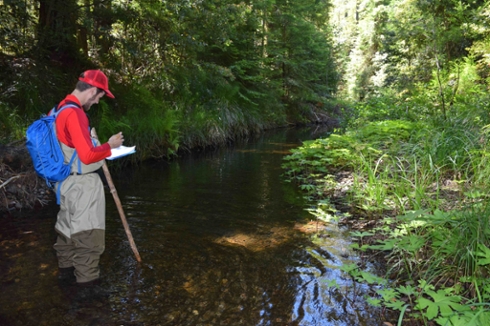
Garret Linck is working on habitat conservation and restoration in the California wilderness as the Paul Siegel Salmon Restoration intern. Read on for his first impressions and experiences.
Situated between Redwood groves and the Pacific Ocean, I have spent my first two weeks as the Paul Siegel Salmon Restoration Intern at the Mendocino Land Trust (MLT) traipsing through the rivers and forests of the North Coast. After a warm welcome from the crew at the MLT office in Fort Bragg, I drove over to Russian Gulch State Park and hauled my guitars, a few crates of vinyl, and my bicycle into the cabin where I will be living until August. From my doorstep, it is a brisk ten-minute walk to the Russian Gulch Headlands and Sinkhole—a mesmerizing locale where I’m frequently impressed by the force of the tide coming in and the abundance of wildlife. Nestled among the craters that perforate the cliff walls, Black Oyster Catchers cling to the walls as the strong wind ruffles their feathers.
On my second day, I jumped into Doug Kern’s (Big River Program Manager) green pickup with Nicolet (Trails & Stewardship Coordinator), and we meandered through the potholed roads of Jackson Demonstration Forest until we reach the nonsensically-named North Fork South Fork of the Noyo River. Doug and Nicolet each donned a pair of waders, which seemed to vie for the title of ‘most-waterlogged’. Doug’s quickly earned the title as evidenced by the continual fountain of water from his boots as he emerged from the river. I penciled in measurements of various habitat types as we traveled upstream, differentiating between Riffles, Scour Pools, and Non-Turbs (three different habitat classification units, denoting the depth, width, and velocity of the water). The terminology takes a bit of time to pick up on, but by the end of the day I was gaining confidence in both my understanding of the survey and my ability to scramble through thorns and underbrush. Three new pairs of waders should be arriving soon, and we will renew our efforts surveying the two-mile segment.
Continue reading Siegel Salmon Restoration Internship 2015: Garrett Linck
Peruvian Rainforest Conservation Project: Jaclyn Calkins, Winter Fellowship for International Travel

Working on a conservation project for two weeks at Chontachaka Lodge in Manu Ecological Reserve, Peru, has been one of the most rewarding experiences of my life. Time flew as I spent my days surrounded by a dense, green, and immensely beautiful Amazon jungle environment. I got my hands dirty helping to save it for future generations. Volunteers ate a completely vegetarian diet, since the space required for meat farming has widespread and devastating impacts on forests. We also used only biodegradable supplies, including clay-and-pasta-based toothpaste and lemon oil bug repellant (which didn't do much to prevent me from getting back to Cusco covered in insect bites from head to toe, but DEET-based bug repellants are terrible for the ecosystem!) The idea, in addition to being out there helping with conservation, was to leave as little of a footprint as possible - and I was able to do just that.
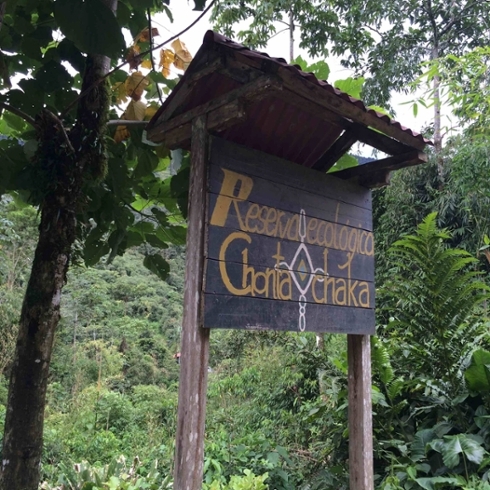
My tasks in this project included planting species vital to the region (such as the leche-leche plant, called such because of its white sap, which attracts an uncommon species of green butterfly), using a machete to remove invasive species (like bamboo) that threaten the growth of native plants, and monitoring wildlife such as Peru's native bird: el gallito de las rocas, or cock of the rocks, and a number of frog species impacted by climate change. In my free time, I had the opportunity to hike the reserve’s many trails, walk to tiny local jungle villages to practice my Spanish, journal about my experiences and the history I learned in Cusco to inspire future fiction writing, visit an animal sanctuary, and swim in nearby waterfalls! Only in Manu can a variety of animals such as wild monkeys, jaguars, giant anteaters, giant otters, and caimans still live without fear of hunting or other human influences, and a majority of insects there have not been studied by science at all. Most of the reserve (which is the size of New Hampshire) is accessible only to licensed biologists, so it was a blessing to be able to work in part of it as a student. I hope to return to Manu in the future to explore even more of the area as a field biologist. This was an amazing and eye-opening way to spend my Winter Break, and I'm very thankful to Reed for making this opportunity possible.
Continue reading Peruvian Rainforest Conservation Project: Jaclyn Calkins, Winter Fellowship for International Travel
The Siegel Salmon Restoration Internship: Part 3
Some things about the American beaver:
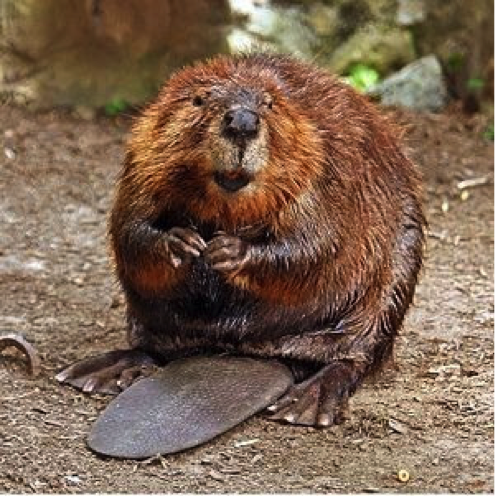 Figure 1. The American beaver.
Figure 1. The American beaver.
When Doug, the Land Trust’s Big River Program Manager, first proposed the idea to me, I was more than a little surprised. We had spent so many weeks talking about large woody debris, culvert passage, and road decommissioning that it seemed almost impossible for something so cute and furry to help salmon. I suspended my disbelief and delved into research. Lo and behold, beaver reintroduction projects have proven successful throughout the Pacific Northwest, improving salmon habitat and raising fish numbers. It isn’t an easy choice by any means; reintroducing beavers on one property requires monitoring their survival, distribution shifts, and population growth. However, a surprisingly large body of literature exists on the remediation of these issues, and has been used in other beaver reintroduction projects. So, why not try it?
Continue reading The Siegel Salmon Restoration Internship: Part 3
The Devil is Made of Plastic
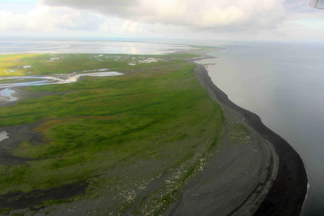
There are over 2,500 miles of coastline in the Kodiak Archipelago, and there are about 3,000-3,500 Kodiak brown bears that call their island namesake home. This means that if all those salmon-stuffed ursas were lined up along the many beaches and bluffs of their Alaskan archipelago each bear would pretty much have its own mile of coast. There are only about 1,300 miles of coastline in the entire west coast of the United States of America, from Bellingham, Washington to San Diego, California, and not nearly that many bears. Think about that one. In July, a team of eight people, myself included, went to Tugidak Island on the southern end of the Kodiak Archipelago and walked a mere 2.5 miles, or one one-thousandth, of Kodiak’s coast, picking up marine debris. Eight to ten THOUSAND pounds of marine debris in three days. Now wrap your head around that number.
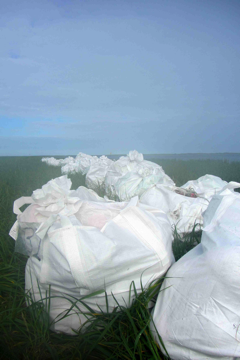 What is marine debris? It’s nothing more than a fancy term for trash. Garbage. Waste. Junk. And on top of whatever your word of choice is for human carelessness, you can also be sure to call it totally destructive and 100% preventable. 100% preventable, really? Yes, friends, as powerless as we all have been conditioned to feel by the forces of destruction themselves (albeit while they are disguised as “clever” advertisements and enticing packaging) this is an environmental problem that we can all stop squarely in its tracks.
What is marine debris? It’s nothing more than a fancy term for trash. Garbage. Waste. Junk. And on top of whatever your word of choice is for human carelessness, you can also be sure to call it totally destructive and 100% preventable. 100% preventable, really? Yes, friends, as powerless as we all have been conditioned to feel by the forces of destruction themselves (albeit while they are disguised as “clever” advertisements and enticing packaging) this is an environmental problem that we can all stop squarely in its tracks.
So what’s the source, you ask, genuinely curious. I recycle (when I can) you say. I don’t live by the ocean and I’ve even adopted a manatee! Well have you ever drunk out of a plastic water bottle? Ever? Even as you gave yourself the excuse that it was only because you left yours at home? Have you ever bought anything that when you turned it over you could feel, in little bumpy letters next to the seam of the plastic, said “MADE IN CHINA,” “MADE IN KOREA,” or “MADE IN TAIWAN”? Have you ever stopped to think about how strange it is for something that originated in a foreign country to have English lettering on it, as clear as day?
Continue reading The Devil is Made of Plastic
The Siegel Salmon Restoration Internship: Part 2
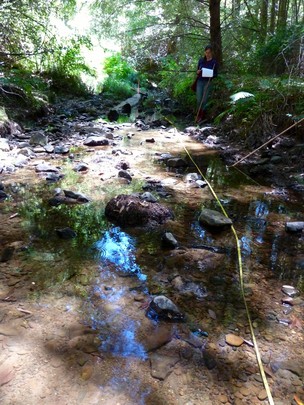
Figure 1. In-stream measurements at Russell Brook. Although picturesque, the stream is not very hospitable for rearing and migrating salmon.
The large woody debris project forges ahead here at the Mendocino Land Trust. Two weeks ago, I went into the stream at Russell Brook along with Doug (Big River Program manager) and Nicolet (Trails & Stewardship Coordinator). We walked the length of the project area (about a half mile) and took some basic stream measurements (Figure 1) that quantitatively describe the area and determine the baseline level of viable salmon habitat. Spoiler alert: it’s pretty low. Pools are infrequent and shallow, meaning that salmon don’t have good rearing habitat, and cannot rest during upstream migration. Water temperature is high, which poses a problem for these cold-water inhabitants. However, only a couple hundred feet up the stream, where large woody debris has already been installed, deep pools swell over the tops of waders (a bittersweet discovery).
The California Conservation Corps (CCC) has now begun the arduous process of hauling and anchoring huge logs in the stream according to detailed plans (Figure 2). I’ll get to see the crews in action in a couple weeks while conducting an inventory of the large woody debris that is in place.
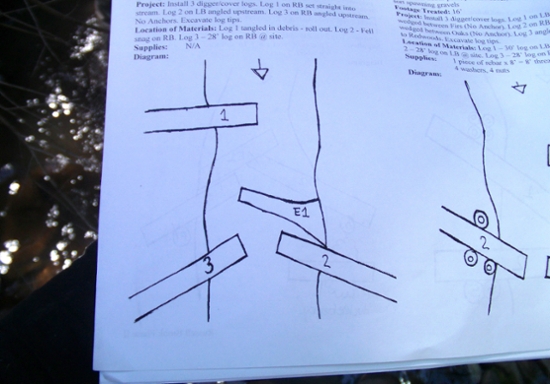 Figure 2: Large woody debris plans developed by the California Conservation Corps.
Figure 2: Large woody debris plans developed by the California Conservation Corps.
Continue reading The Siegel Salmon Restoration Internship: Part 2
Beauty is a little girl with seaweed on her lips, life is a treasure on the beach
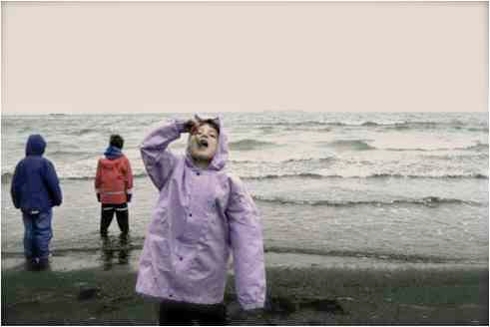
“Do you like it?” I asked, as little Elaine eagerly took the sea lettuce from my outstretched hand and popped it in her mouth. She chewed thoughtfully, opening her mouth so I could see her teeth every time she bit down, fully exploring the odd new texture. Then she swallowed and a serene expression came over her sea-sprayed face: “Miss Leila,” she said, as salt water dripped from her eyelashes, “I just want to stay on this beach forever and eat seaweed.” Elaine hugged herself within her purple rain jacket and turned to look out at the wind-whipped ocean. It was a picture of wildness and beauty, and it made me feel really alive—kind of like the feeling you get in the moment you decide to embrace the rain and just get soaked. I couldn’t have wiped the grin off my face if I wanted to as I turned to look at the other children playing along the beach and picked up a new handful of sea lettuce. I swirled it in the surf to rinse it of sand and walked down towards the little rain-dancing rain-boots with my handful of salt-soaked offerings.
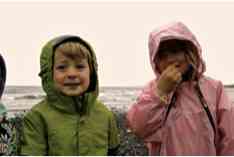
Officially my job title at the Kodiak National Wildlife Refuge is “Park Ranger,” which is both a really poor sum-up of my actual position and kind of a misnomer anyways when you work for the Fish and Wildlife Service, with is quite different from state or National Parks. When I describe my job to other people I tell them I am the Youth Conservation Corps crew leader at the Kodiak National Wildlife Refuge (KNWR), and that I lead a team of four high school students in projects both in town and out in the field that benefit the Refuge and the Kodiak community and educate the high schoolers about the National Wildlife Refuge system and the many things that KNWR does to fulfill its mission to conserve and protect the Kodiak Brown Bears and their beautiful archipelago habitat. Which is all grand and well, but when I really think about what this summer experience is meaning to me, three words come to mind with which I would describe myself: teacher, learner, explorer.
Greetings from the Northern California Wilderness: The Siegel Salmon Restoration Internship
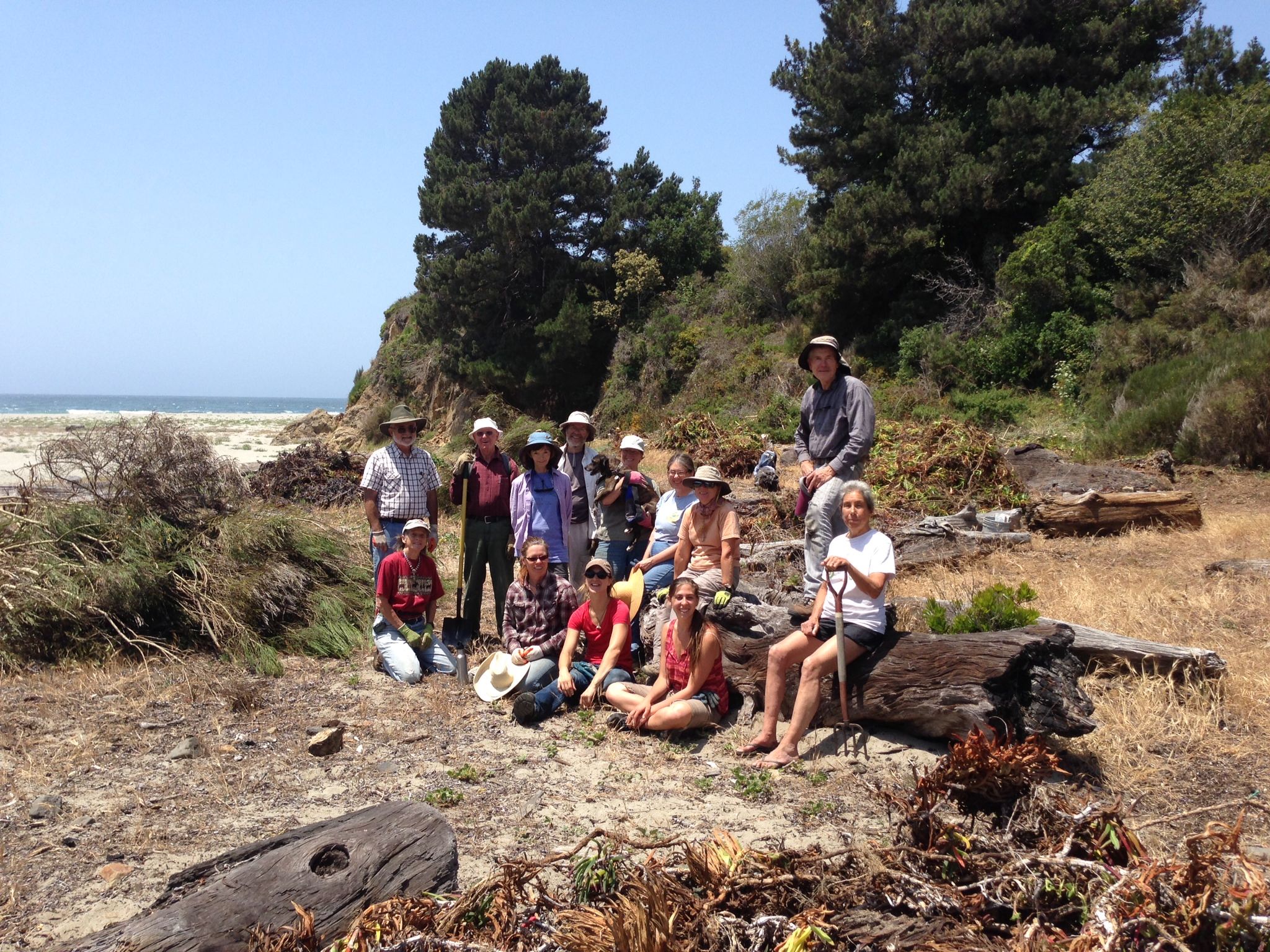
Hello from the Northern California wilderness! This past week and a half has gone by so quickly. The first thing that struck me was the natural beauty of this area. Every morning I get to run on the trails behind my cabin in Russian Gulch State Park, then I visit the beaches each afternoon. I can hear sea lions from my campfire spot, and see great blue herons on my way to work.
I spent most of last week settling into the office and meeting all the wonderful people who work here. I also got to tag along for a few bird surveys, which the Mendocino Land Trust is conducting with the help of some volunteers. I did manage to pick up a couple calls, and at the least can now distinguish between the chips of a squirrel versus those of a bird (harder than you may imagine). I also went out with a group from the Bay Area who were using their vacation time to do community service (part of a movement called “voluntourism”). They were a really friendly and lively group, and were incredibly helpful in removing the invasive species from the beaches (see photo).
